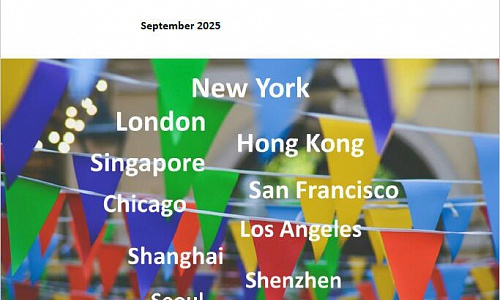 Author: Fan Gang, President, CDI
Author: Fan Gang, President, CDI
Editor’s Note: China’s low levels of consumption can be partly explained by the fact that consumption accounts for a rather small share of income, with China’s current household spending representing only 40% of GDP and the combined spending of government and consumers accounting for only 55% of GDP, and partly by high savings rate. In 2007, the national savings rate reached a record high of 51%. In recent years, despite efforts to reduce the proportion of savings and increase consumption, the national savings rate remains elevated at around 45%. Aside from household savings, corporate savings and government savings also matter. Corporate savings usually refer to profits that are not spent. Deposits of some large SOEs may total up to tens of billions of yuan, and yet they choose to save them with the SASAC (State-owned Assets Supervision and Administration Commission) rather than share the dividends or turn them over to the national treasury. Therefore, over the past decade, money has added up in bank accounts. And one motive behind the Belt and Road Initiative is to tackle high savings rate. China’s consumption is actually suppressed against such backdrop.
Drivers for Consumption Growth
Income growth is the most important driver for consumption growth. Countries with high consumption must also be high income countries. China is still a middle-income country with per capita GDP of 8000 dollars, while the per capita GDP of the United States is over 50,000 dollars, and that of Norway is 100,000 dollars, which ranks 1st in the world. As a developing country, China’s consumption surely needs to become stronger. An increase in earnings among people with lower income, who demonstrate higher elasticity of consumer demand, will contribute to faster consumption growth of the society as a whole.
Credit consumption and finance are also driving forces behind consumption growth, which have seen rapid growth with the development of P2P platforms and Internet finance. Online mobile phone purchased by university students constitutes a short-term small consumer credit. China's consumer credit has surpassed industrial loans to become the largest sector in the banking system with 26% of share.
E-commerce has also fueled consumer spending. Presently, delivery reaches not only urban areas but also the countryside. These delivery vehicles are loaded with consumer goods.
Patterns of Consumption Growth
First, though the Chinese appetite for material consumption is far from been satisfied, service consumption has begun to grow. With growing income, people begin to have more disposable income to spend, with the consumption of physical goods seeing the fastest grow that the moment. Meanwhile, service consumption has begun to see substantial growth as well. The service industry has become the largest industry in China today. Transformation from diversified consumption to the service industry is taking place and gaining momentum.
Second, traditional consumption and new types of consumption are both on the rise. Basic needs such as those for housing and family life have not been met. 70% of the Chinese are the low-income class, of whom 34% are farmers. As their income grows, many of them will first try to meet their basic needs, thus generating great market potential in traditional consumption. An important driving force behind this process is urbanization, which obviously is related to the property market. As people migrate, their housing needs change accordingly. Farmers want to buy houses in the county as they move in from the countryside. County residents prefer to live in prefecture-level cities, as those in prefecture-level cities seek personal development in provincial capitals, whose residents decide to try their fortunes in megacities. As the country urbanizes, its people are moving from one house to another.
In a way similar to housing, the consumer market follows where people move. During the urbanization process, new types of consumption, such as consumption of entertainment, culture, health and education are also growing faster and the share of the service industry will be even larger. According to the big data provided by international credit card companies, the growth of high-end service industry is the future trend, while the consumption of goods will be more diversified, refined, functional and ritualized, which will inevitably create a lot of demand, such as people’s demand for professional sportswear.
Finally, it is worth noting that China's retirement consumption has just begun. With an aging population, there is still a long time between retirement and old age requiring elderly care. Perhaps people will begin to need elderly care only in their 80s. If they are 60 years old now, there will still be 20 years ahead to enjoy and to consume before old age. China’s new-generation retirees are just emerging, who, benefiting from high economic growth brought by reform and opening-up over the past 30 years, have become China’s middle class. Before retirement, many of them have money but little leisure time, but now as they have both, the party of retirement consumption will begin.








